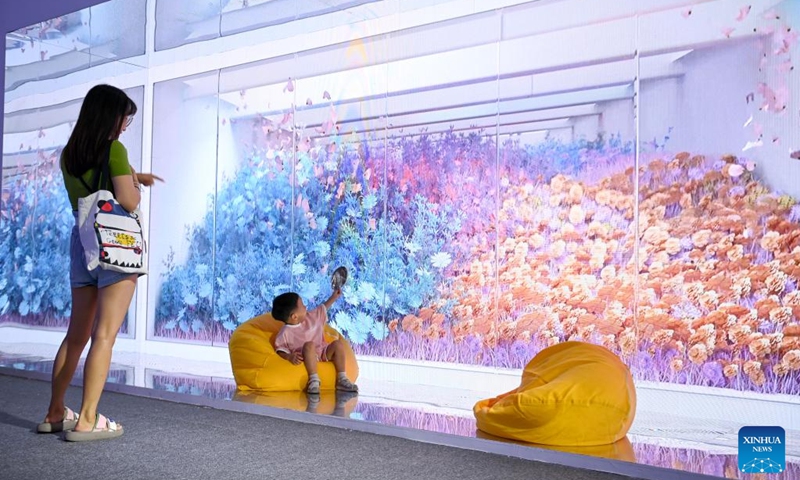
Photo: Xinhua
The Chinese Ministry of Culture and Tourism recently unveiled its latest selection of the top 10 digital innovation cases in the cultural and tourism sector, which includes multiple exemplary projects showcasing the cutting-edge use of digital technology to both transform traditional cultural works and aid in the preservation of China's rich heritage.
One standout case involves an immersive Yue Opera (known for its euphemistic lyricism) performance of
Lin Daiyu Buries the Fallen Flowers, a classic story from the 18th-century Chinese novel
Dream of the Red Chamber.
Leveraging virtual reality (VR) technology and augmented reality (AR) glasses, this innovative production merges virtual Yue Opera performances with real stage settings. This unique integration of digital and live performances marks a groundbreaking shift in traditional theater experiences.
Another instance, the Red Chamber Fantasy digital exhibition also drew inspiration from the
Dream of the Red Chamber. Utilizing immersive lighting effects and virtual reality technology, this exhibit offers seven thematic immersive digital spaces that delve into the novel's love stories, character relationships, and folk culture.
The Luoyang virtual reality theater provides an unparalleled immersive drama experience by merging live theater with VR interactivity. Through scene reconstructions and interactive role-play, this project enhances immersion.
Cutting-edge technology like motion capture and VR redirection, coupled with features such as audio vibrating floors, ensures that the boundary between reality and virtuality is blurred, delivering a digitally fused cultural experience that allows visitors to be immersed in the bustling scenery of the divine capital Luoyang over 1,000 years ago.
Apart from these innovative transformations, digital technology is also being used for the preservation of China's exceptional traditional cultural works. The National Library of China, for instance, has used 3D restoration technology to create a database for the
Yongle Dadian. Commissioned by the Yongle Emperor in 1403, it collects more than 7,000 kinds of ancient Chinese books and records, covering literature, art, history, geography, philosophy and religion from the pre-Qin period (pre-221BC) to the early Ming Dynasty (1368-1644).
The database provides an immersive display of the contents of the
Yongle Dadian, which consists of 40 volumes and 75 chapters. Hundreds of classic works of traditional Chinese culture are displayed in a VR format. Moreover, VR exhibitions, including those about classic literature are being offered to readers online to promote the sharing of cultural resources.
The Suzhou Silk Museum is leading the charge in digitizing traditional silk designs, resulting in a treasure trove of data assets for cultural enterprises. Over 1,300 silk designs have been digitized, paving the way for the development of animation derivatives, audio equipment, cultural and creative products, and much more.
The primary objective of these projects is to use digital technology to propagate China's exceptional traditional culture while maintaining a commitment to innovation, a spokesperson of the Ministry of Culture and Tourism remarked.
Cases exemplifying how digital technology drives innovative models, formats, and approaches, empowering high-quality development in the culture and tourism sector have been included in the list.
For instance, Douyin, the Chinese version of TikTok, has created a virtual stage for live performances, ushering in a "dual performance" model, which integrates online and offline elements. This innovative approach supports the digital transformation and upgrading of cultural and performing arts groups.




